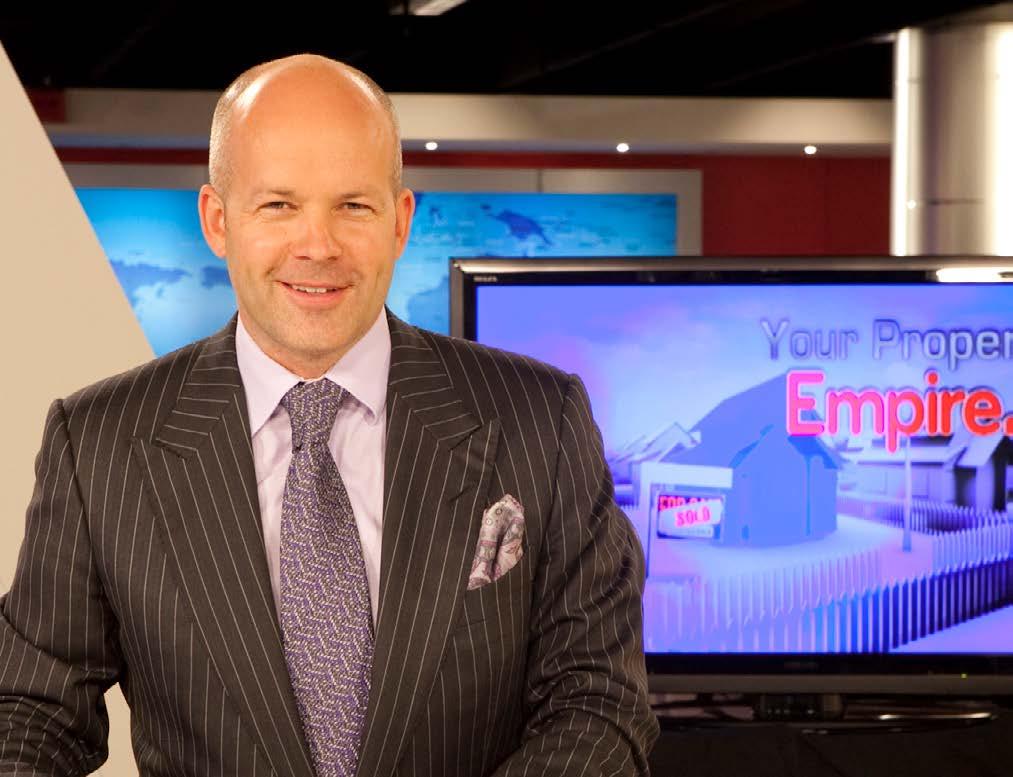
5 minute read
Why many financial planners still undervalue property and what you can do about it
By Chris Gray, CEO, Your Empire
When most people think about seeking financial advice, they imagine sitting down with a well-qualified, independent financial planner who can help map out their path to retirement. But if you’re a property investor – or even just curious about how real estate could help build your wealth – you might be surprised to learn that many planners still push shares as the default investment strategy. Why? Because historically, their remuneration has depended on it.
While commission-based incentives have largely been phased out, the legacy of that system still lingers. Many planners built their businesses around managed funds and share portfolios – and old habits die hard. Even today, it’s not uncommon to hear of financial planners recommending clients sell property and use the proceeds to buy shares. Or they might suggest unlocking equity in your home to funnel into a managed fund, because that’s the system they’re trained in and comfortable with.
Of course, there’s nothing inherently wrong with shares. They have a role in many people’s portfolios. But the issue is when the advice is skewed – not because it’s in the client’s best interest – but because the planner doesn’t truly understand the power of property, or isn’t incentivised to recommend it.
Thankfully, things are changing
We’re now seeing the rise of a new breed of financial planner: flat-fee, product-neutral, and genuinely independent. These planners charge based on the time, effort, and complexity involved – not on what assets you hold or where your funds end up. Whether you have a million dollars in property or a million in shares, the fee is the same. And that removes a key source of bias.
Even better, some of these planners are property investors themselves. They understand leverage. They know how real estate cycles work. And they can model future wealth projections using real-life scenarios – not just a standard 7% return assumption and a single asset class.
The power of this kind of planning is huge. The best advisers we refer our cli ents to use sophisticated forecasting tools to help you make informed decisions. You can run scenarios like:
“What happens if I buy another $1.5M investment property this year?”
“What if interest rates hover around 6% for the next decade?”
“Can I retire at 50 if property prices grow at just 4% a year?”
“Do I actually need to keep working – or am I already set?”
This modelling helps take the guesswork out of the future. And for many of our clients, it’s a massive relief. We often meet investors who’ve built a substantial portfolio, but still live like they’re broke – always saving, always scrimping – simply because they’ve never been shown what the future actually looks like.
In some cases, they could afford to relax. Maybe cut back on work. Travel more. Spend more time with family. But no one’s ever given them permission to – because no one’s ever run the numbers for them.
I recently read a great book called Die With Zero by Bill Perkins. It’s not as morbid as it sounds. The central idea is that wealth has a curve – and it peaks when we still have the energy to enjoy it. There’s no point dying with millions in the bank if you didn’t take the time to live along the way.
Too often, we see the opposite: parents who worked hard, saved hard, lived frugally… and left behind a pile of assets they never enjoyed. Their kids inherit the money at 60 – when they needed it at 35. The system failed both generations.
That’s why clarity is so powerful. Knowing where you stand today and where you’re likely to end up can change how you live now. And a good financial planner – especially one who understands property – can help you get that clarity.
Just make sure they understand leverage
Leverage is the real game-changer in property. If you’ve got $100,000 to invest, you might be able to buy $200,000 in shares if you borrow. But many investors are wary of margin loans – because if shares drop, the bank may ask you to top up your account or sell off your position. Not great timing.
With property, that same $100,000 could allow you to buy a $1 million asset – often with as little as a 10% deposit (or even 5% in some cases). And if the market dips 5% or 10%, as long as you keep making repayments, you’re usually fine. There’s no “margin call” on your home or investment property.
That’s why banks are happy to lend 90–95% on property. It’s low-risk for them – and potentially high-reward for you. If your $1 million property goes up 10%, that’s a $100,000 gain – on a $100,000 investment. That’s a 100% return, without counting rental income, negative gearing or tax deductions.

So imagine if your financial planner doesn’t understand that – or doesn’t believe in it. They might think they’re giving you safe, sensible advice by steering you toward a share portfolio instead. But in doing so, they could be leaving massive opportunities on the table.
That’s why we’ve built a panel of independent financial planners who understand property inside and out. They’re investors themselves. They’re unbiased. And they can help you forecast your future, make smarter decisions, and live better today – not just decades from now.
And if you don’t know where to start, we’re happy to point you in the right direction. As independent buyers’ agents, we don’t take a cent in referral fees – so our recommendations are completely impartial. We just want to make sure you’ve got the right people around you.
Because the right planner can do more than just help you retire.
They can help you live.





